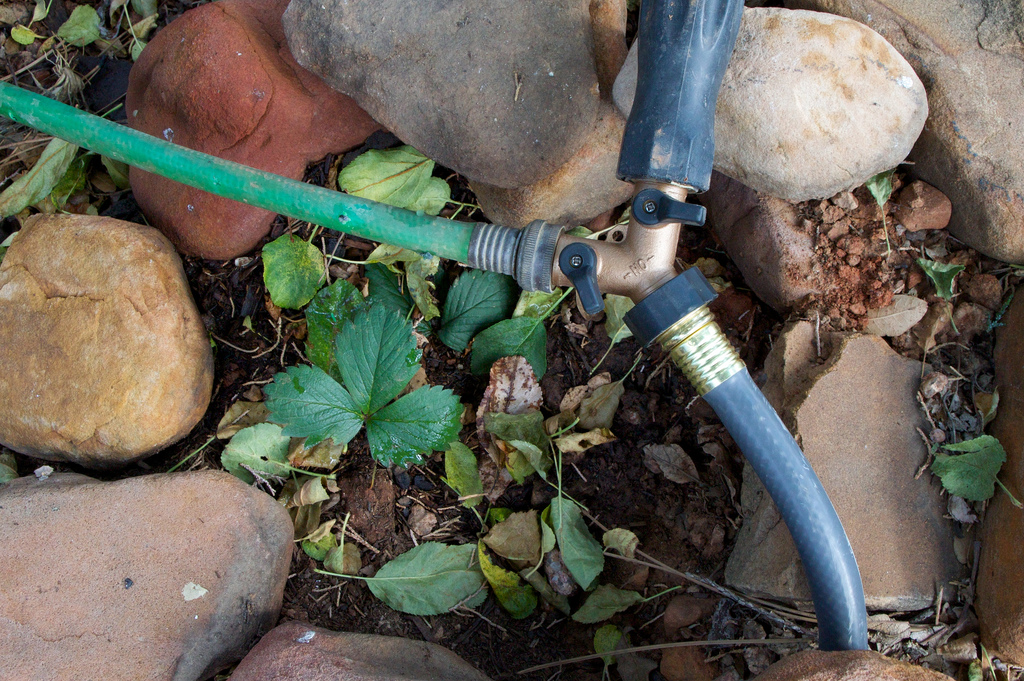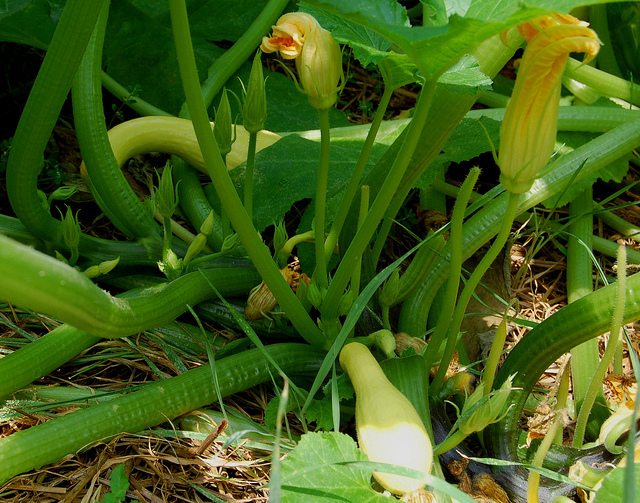 Your plants are as susceptible to the heat as you are. They can become sunburned, and the vegetables growing on their vines can become warped and unpleasant to look at (although they are still edible.) Even those that are known to thrive in hot weather can wilt slightly and stop producing as many tomatoes, peppers and other vegetables when the temperatures hit the mid to low 90s. In order to keep your plants happy and productive, follow these steps:
Your plants are as susceptible to the heat as you are. They can become sunburned, and the vegetables growing on their vines can become warped and unpleasant to look at (although they are still edible.) Even those that are known to thrive in hot weather can wilt slightly and stop producing as many tomatoes, peppers and other vegetables when the temperatures hit the mid to low 90s. In order to keep your plants happy and productive, follow these steps:
1) Plant your garden in the right section of your yard. Obviously, this should be done while in the planning stages each spring. Although some vegetables and fruits need to be grown in full sun, it is always a good idea to plant them in an area that gets at least some shade, especially during the hottest parts of the day. It may not seem necessary during the spring and fall, but once summer hits and high temperatures become a daily occurrence, your plants will thank you. Plant your garden in the part of your yard that has an eastern or northern exposure, if possible. These sections will bear the least brunt of direct sunlight.
2) Water them thoroughly and consistently. The key to keeping your plants alive during very hot weather is water. Don’t water them in the mid to late afternoon when the temperature and amounts of sunlight hit their highest points, as this cause the water to evaporate before it even gets from the nozzle of the hose to the base of the plant. Also, getting water on the leaves at this point of the day will only add to the reflection of the sun and make things hotter for the surrounding plants. Instead, thoroughly water your garden in the early morning or late evening when the temperature has cooled somewhat. Be careful not to drown your plants, but do keep the soil as moist as possible to counteract the heat – there should not be standing puddles underneath them an hour after watering.
3) Spread a layer of organic mulch around the base of each of them. This will add some insulation to the soil and help it retain moisture. The mulch will counteract the effects of the sunlight by soaking it up before it gets to the ground below. It does not need to be a thick layer of mulch – one that is around two to three inches will do – less than you spread out in the fall to insulate the ground for winter weather.
4) Cover your plants if nothing else works. If you’ve planted your garden in the right spot, watered it thoroughly and spread mulch around the roots, and your plants still seems to be shriveling in the heat and showing obvious signs of a sunburn (light spots forming on the upper leaves) then the only thing left is to cover them with sheets of burlap or organic cotton. Draping these over the plants during the hottest points of the day and removing them once the weather cools will help immensely.
One thing to keep in mind is the fact that even after you follow all of these steps, your plants might still stop producing. It’s hard to control them entirely, and all of the hard work in the world can’t save them if the root systems aren’t deep enough or the soil isn’t thick enough to support them during a heat wave.
Find Out More About the Food4Wealth System Now and Learn How to Make Your Garden Amazing
 Do you want to eliminate your fresh food bill?
Do you want to eliminate your fresh food bill?
If you’ve ever wanted to be self sufficient and grow your own food, then I highly recommend that you check out the Food4Wealth system for growing quality food without all the problems.
The Food4Wealth system can help you build a sustainable garden that regenerates all by itself.
Click here to see if it is right for you.




When covering the plants, it would help reflect the sunlight if you used light colored fabric.